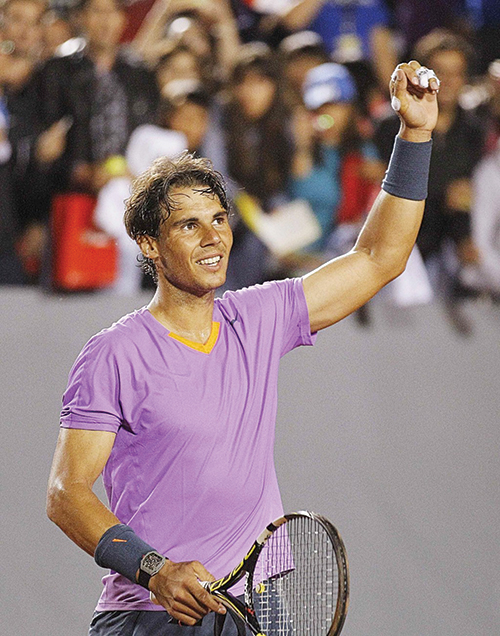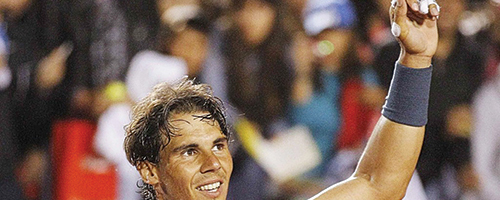Rafael Nadal lost in the final of a clay court event on Sunday, a minor tournament result more notable for its sheer novelty than any implications it might have for tennis’ current power structure. To date, Nadal has participated in 277 matches on the dirt during his tenure on the ATP Tour—Sunday’s loss was his 20th.
Basement Notes: Running of the bull

Rafael Nadal lost in the final of a clay court event on Sunday, a minor tournament result more notable for its sheer novelty than any implications it might have for tennis’ current power structure. To date, Nadal has participated in 277 matches on the dirt during his tenure on the ATP Tour—Sunday’s loss was his 20th. His name has become synonymous with the surface in a way that perhaps no other player with a similar specialization could match. Of his 50 singles titles as a professional, 36 have come on clay, including seven titles at Roland Garros, six in Rome and an altogether baffling eight straight trophies in Monte-Carlo. Regardless of form, the 26-year-old Mallorcan, dubbed Spain’s “Raging Bull,” is the prohibitive favorite in any tournament that stains its participants’ socks with the powder of crushed brick.
But the final-round matchup between Nadal and 73rd-ranked Horacio Zeballos at the Chile Open in Vina del Mar was hardly contested under typical circumstances. Nadal’s first match at the tournament, a workmanlike straight-set win over Federico Delbonis, was his first appearance in an ATP-sanctioned event since losing to Lukas Rosol at Wimbledon last June, one of the most significant upsets in recent Grand Slam history. Not long after, the reality of Nadal’s physical condition came to light with the confirmation of lingering tendinitis in his knee, a disturbingly routine consequence of his relentless and punishing style of play. He was unable to defend his Olympic gold medal at the London Games, then pulled out of the entire summer hard court swing and the U.S. Open in September. When he didn’t recover as well as planned during that stretch, Nadal scrapped the rest of his schedule for the year and began the rehabilitation process full-time.
After a stomach virus delayed his comeback at the Australian Open in January, Nadal decided to postpone his return another three weeks, and the Chile Open, a lower-level ATP event (the second seed in the draw was 15th-ranked Juan Monaco), was the beneficiary. Nadal rolled to the final without dropping a set when he ran into Zeballos, an Argentine grinder who played the match of his career to take down Nadal in three tight sets and move 30 spots up the rankings. It was an unexpected outcome made slightly more understandable when considering the events that preceded it, and the Chile Open scored a marquee headliner while Nadal got in some valuable match play to kick-start his 2013 campaign.
Ultimately, though, the score line was irrelevant. Had Nadal stormed to the title in Vina del Mar, few would have found the result especially newsworthy, but they certainly wouldn’t have begrudged him a tough loss after such an extended absence, either. The important part, of course, was that Nadal was playing at all. Since hurtling onto the scene at the French Open in 2005—winning the title in Paris on his first try—Nadal has been, along with Roger Federer, the sport’s primary attraction. He has collected wins over the best in the game (including an emphatic 18-10 record against Federer) and come away with titles at all four majors and nearly every significant event outside of the Slams. Nadal is a fan favorite wherever he plays, the unassuming and indomitable baseline artisan whose game translates easily into any language.
Regardless of one’s personal allegiances, most tennis fans would agree that the tour simply isn’t the same without him. After eight months, Nadal now steps back into the conversation, having dropped only three spots in the rankings to number five and still decidedly in the prime of his career. He has proven that he is capable of winning anywhere, against anyone, on clay or any other surface. Whether his body holds up to the torment he has subjected it to along the way remains to be seen, but there is no question that tennis is better off when his name is in the draw.




